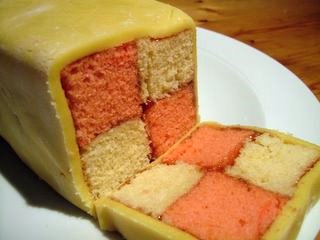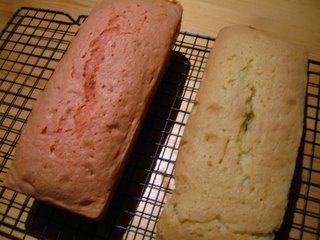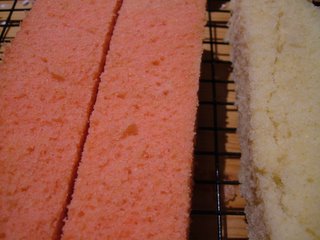This one’s for marzipan lovers. I love almonds and cherries, and there’s something undeniably Christmas-y about the combination. To kick the Christmas angle up a notch, I spent a while experimenting with marzipan, and I’ve worked out a method that makes marzipan pieces melt into the cookie dough in a gooey, puffy fashion.
I’ve used sweetened, dried sour cherries, which are now readily available in the baking sections of supermarkets in little metallised plastic packets. They’re a very different beast from glacé cherries, and retain a tart bite and juicy plumpness, which is a brilliant contrast to the sweet marzipan and sugary cookie dough. Ground almonds and egg whites give these a near-macaroon texture. They’re light and have a lovely crisp on the outside with a slightly gooey, squashy centre – absolutely irresistable.
The plan was to make 30 of these, to eat a couple for dessert, and spend the rest of the week eating a few a day so I could tell you how long they’ll last in an airtight box. Sadly, they turn out to be rather moreish, and I discover that as of this morning Dr Weasel and I have both been fishing surreptitiously in the box when we thought the other person wasn’t looking. There are only ten left. I think I need to get the exercise ball out before I start to resemble it.
To make about thirty cookies, you’ll need:
110g ground almonds
110g plain flour
½ teaspoon baking powder
150g golden marzipan
225g salted butter
225g caster sugar
1 egg white
½ teaspoon almond extract
80g dried sour cherries
Mix the ground almonds, flour and baking powder in a large bowl, and chop the marzipan into tiny cubes (about half a centimetre on each side). Mix the marzipan with the dry ingredients carefully, so each little cube is coated and separate, and set the bowl aside.
In another bowl, cream the softened butter and sugar together with an electric whisk in another bowl. Add the egg white and almond extract and keep at it with the whisk until the mixture is pale and fluffy. Use a wooden spoon to stir the flour and marzipan mixture into the butter mixture with the cherries.
At first the mixture will look as if it won’t form a dough, but if you keep at it you’ll find it will eventually come together smoothly (in part thanks to the oils in the marzipan and ground almonds). Bring the dough together into a ball with your hands and put it in a freezer bag, seal and leave in the fridge overnight.
When you are ready to bake the cookies, preheat the oven to 180°C (350°F). Take the dough out of the fridge and make neat balls of about an inch in diameter between your palms, ensuring that every ball has at least a couple of cherries in it. Arrange the balls on grease-proof paper on baking sheets with a gap of 2 inches between each one, and bake for about 25-30 minutes until the cookies are turning golden (see photograph). Remove from the oven and leave to cool on the baking sheets until the cookies start to firm (about five minutes). Use a spatula to move them onto racks to finish cooling.




